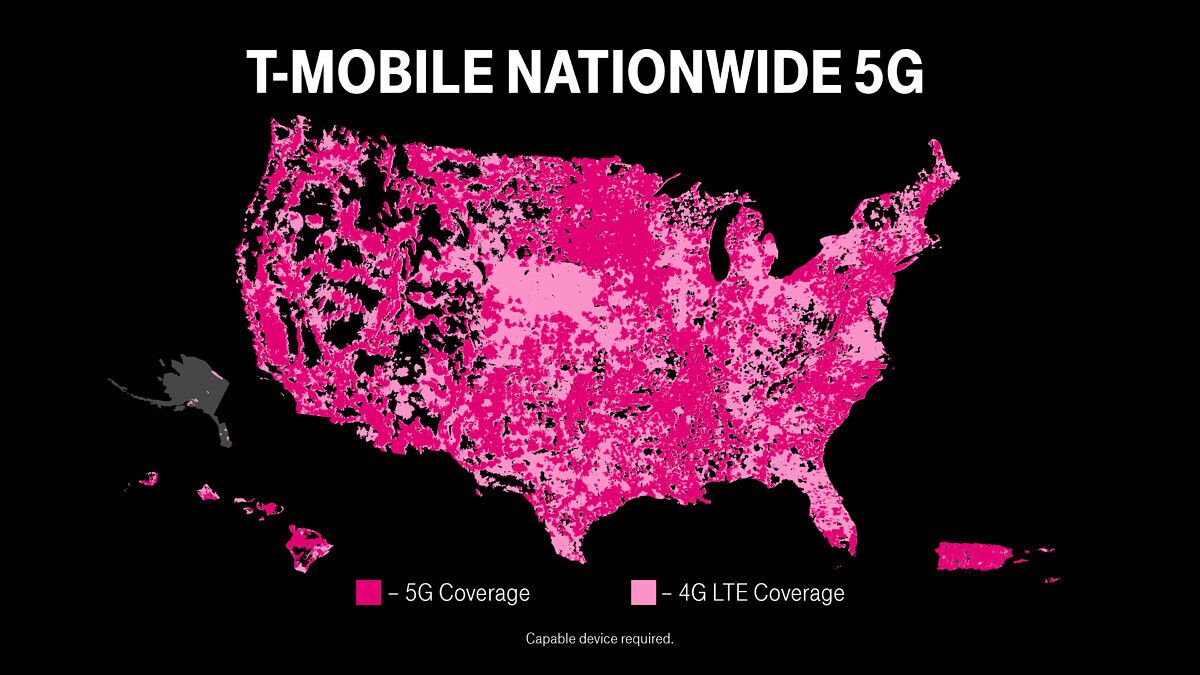Verizon, AT&T, and T-Mobile are competing to deliver next-generation 5G connectivity to hundreds of millions of Americans. While Verizon is deploying its high-throughput, low-latency mmWave network in new U.S. cities every month, T-Mobile and AT&T are rapidly expanding their slower but more accessible sub-6GHz networks across the country. T-Mobile, in particular, has aggressively upgraded its 5G network after acquiring Sprint's 2.5GHz mid-band spectrum. Now, the carrier has announced a major milestone in its 5G deployment efforts: The rollout of a nationwide standalone 5G network.
For those unfamiliar, the vast majority of 5G networks around the world are considered non-standalone (NSA) as 5G radios are broadcast using existing 4G LTE infrastructure as the backbone. While that allows carriers to more quickly provide 5G access thanks to the broad availability of existing 4G infrastructure, the downside is that download, upload, and latency won't meeting consumer expectations of next-generation 5G connectivity.
AT&T is using a technique called Dynamic Spectrum Sharing (DSS) to operate both 4G LTE and 5G NR simultaneously on the same network band, but this is only a stopgap solution to ease the carrier's transition from a non-standalone to a standalone (SA) 5G network. T-Mobile, however, doesn't need to use DSS (which incurs performance penalties), as it has a lot of mid-band spectrum in which it can offer 5G service.
Now, T-Mobile is leveraging its extensive cellular spectrum holdings to be the first to deploy a nationwide SA 5G network. The company is boasting up to 40% lower latency and 20-30% faster download and upload speeds while testing its new SA 5G network, according to VentureBeat citing T-Mobile VP Karri Kuoppamaki. In addition, T-Mobile says that they've expanded 5G coverage by 30%, allowing them to provide service to nearly 250 million Americans in over 7,500 cities across 1.3 million square miles. This expanded coverage is now possible because, under T-Mobile's new SA 5G network, a 600MHz 5G signal can cover much more distance from a single tower. In contrast, under T-Mobile's previous NSA 5G network, 600MHz 5G was combined with mid-band LTE to access the core network, so the 5G signal could only travel as far as the mid-band LTE signal.
VentureBeat states that T-Mobile will continue to operate its NSA 5G network as it transitions to full SA 5G coverage.
One of the other benefits of SA 5G for consumers may be improved smartphone battery life. That's because, according to VentureBeat, smartphones connected to standalone 5G networks won't need to simultaneously have their 4G LTE and 5G NR radios active. Many existing 5G smartphones support SA 5G, though not every device will be capable of connecting to T-Mobile's new 5G network. Sprint and T-Mobile devices with Qualcomm's Snapdragon X55 modem will for sure be capable of connecting to the new network.

